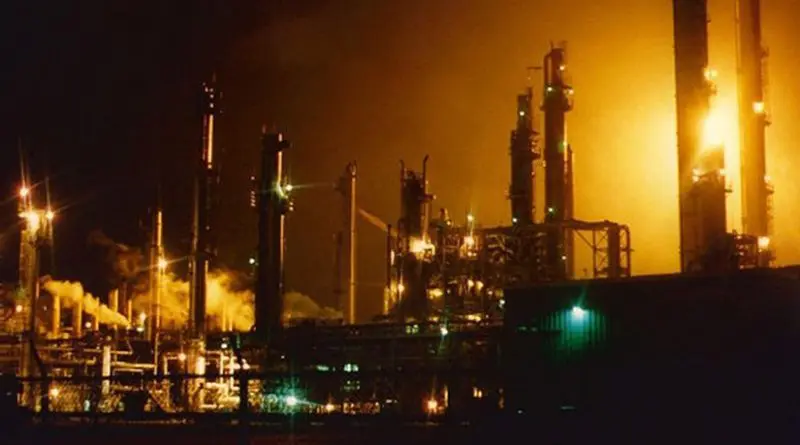Forget The Noise: Oil Prices Won’t Crash Again – Analysis
By OilPrice.com
By Dan Doyle
Oil rising to $60/bbl is displeasing some people, particularly the shorts. Some of the more extreme –those calling for oil in the $20’s – have wisely fallen silent. Others, like Goldman Sachs, who a few months ago had set their flag in the 30’s, have unfortunately not gone so silent. They recently moved their flag into the 40’s but they continue to talk a lot. A better strategy – though one that would require some humility — would be to stop talking and listen.
Recent and compounding data will soon wash away the walls of worry erected by the experts. Four consecutive weeks of inventory draws, each one larger than the last is irrefutable proof that a 60% decline in the rig count means something.
Shorts will downplay this trend and point to last week’s surge in US production. But this could have had as much to do with sales as it did with production. I don’t fully understand all the criteria used by the EIA in assembling weekly data, but I do know what some well-heeled operators have been up to. Those who could afford to store oil in leasehold tank farms began selling long held inventory when oil touched $60. Wall Street would call this arbitrage, but to an oil operator this is known as calling in a load. This is a one-off event but when you factor it into last week’s 2.8 million bbl draw, you will see a clear path towards large inventory draws in the very near future.
Well site storage levels will decrease as will production. The X-axis on all decline curves marks time, Y is volume. The IP (initial production) rates right after a completion may be high with shale wells, but there is a very steep precipice that immediately follows. As we move through time, more and more wells are slipping down this curve that bottoms out at 15% to 20% +/-of initial production rates. And this only takes a handful of months. The flat section a year or so out is known as the tail. The tail is good money, but the upfront flush is what pays for wells.
The rig count went into free fall after OPEC’s Thanksgiving Day announcement. Frack jobs continued, with some sand suppliers booming right through January of this year. But by February, the free fall began there too. That was 4 months ago, which means the sled ride down the decline curve is on.
Another factor to consider is that the EIA weekly production numbers are estimates. As oil producing states begin to report real numbers in 60 to 90 days, you will see markdowns.
Inventory draws of 4 million plus, which will begin shortly, may finally see some of the media saturated shorts stop pontificating for a moment and possibly even consider a short period of quiet introspection. Maybe. Or they may stick to the newest argument—the “fracklog”.
Drilled, though uncompleted wells are nothing new. They’re a common occurrence when mid stream infrastructure is not yet in place or when there is the need to secure a lease. There is also not much of a worry that wells will have to be completed due to state regulations requiring so.
No one is going to rush into their back log of completions either. Everyone in the business is holding cash tightly—really, really tight. And no one is going to run to the debt markets to finance a burst of activity. Completions will occur, but they will occur methodically. For service companies, frack logs will create work but they will not create a boom.
Then there is the issue of TV commentators using the term “efficiency”. Do your best to ignore this. There is no discernible difference between a July 2014 frack job (when oil was around $100) and one that is scheduled for today—other than the fact that the service company is more appreciative and the operator is cheaper.
Ignore the noise and stick with the data. Most walls of worry erected in the last few months have been built on clay. Most have or will fall, particularly within the US and Canada. That said, outside of North America there are real concerns. Chiefly, there is the upside of Saudi production potential and there is increasing Iraqi, Libyan and Russian production. Those are the big issues.
But on balance, these concerns seem to be offset by the wars, skirmishes and terrorist strikes that are increasing in the area, not declining. Watching monthly production out of Libya has the same relative curve as a kid on a pogo stick. And the Chinese economy at 7% growth in 2015 is a bigger consumer of oil than it was at 10% in 2010. Note too, that Asian demand is increasing and Europe is starting to look like it has put in a bottom.
U.S. demand is also better than predicted. The “tax break” that every commentator on every cable station detailed to death is finally showing up in the data. But rather than appearing in retail and hospitality sales as most predicted, it is showing up in oil and gas consumption. Go figure, cheaper gas means people are driving more. Hard to believe, but I think a lot of us missed that one too.
The big story in oil prices was the rig count on the way down. The big story on the way up will be inventory. Look for WTI to make a move towards and maybe into the $70’s as clarity strikes the market. Look too for more walls of worry but remember to consider the source.
Source: http://oilprice.com/Energy/Oil-Prices/Forget-the-Noise-Oil-Prices-Wont-Crash-Again.html

